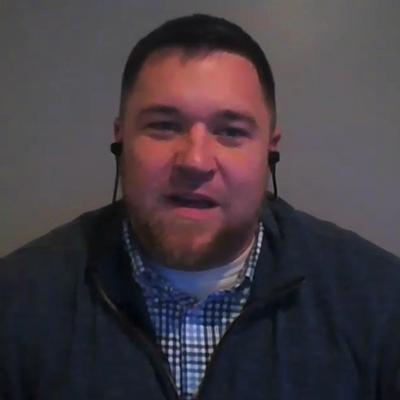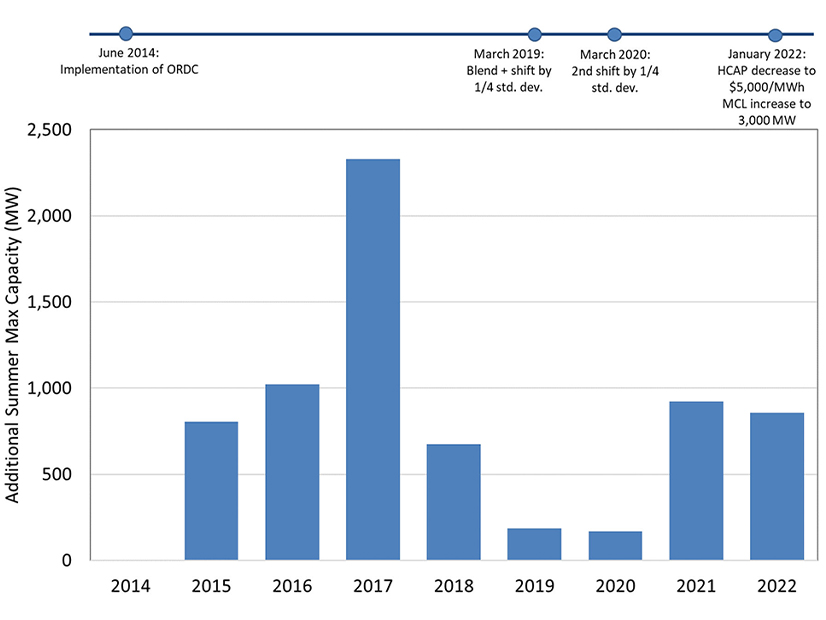FERC on Friday approved Western Energy Imbalance Market (WEIM) tariff revisions to allow generators to include costs associated with the Washington cap-and-trade program in their default energy bids and commitment costs.
The commission approved the revisions over the objection of the Utah Division of Public Utilities (UDPU), which argued the rule changes run afoul of the U.S. Constitution because they impose an unlawful “border tax” on electricity imported into Washington (ER23-474).
WEIM operator CAISO filed the tariff changes late last year in anticipation of the Jan. 1 roll-out of Washington’s cap-and-trade regulations, which require any in-state emitters of more than 25,000 metric tons of carbon a year — including electricity generators — to acquire allowances to cover their emissions. The rules also apply to any electricity imported to serve Washington demand.
CAISO’s rule changes have to do with the reference levels the ISO uses to calculate a resource’s default energy bids and commitment costs for the WEIM. In its filing with FERC, the ISO proposed to alter the reference levels to allow generators selling into Washington to reflect GHG compliance costs in their market bids to ensure that those resources don’t appear be less expensive than their actual costs.
CAISO modeled the changes on tariff provisions already in place to accommodate California’s cap-and-trade program, which is administered by the state’s Air Resources Board (CARB). Under those provisions, the reference levels used in the default energy bid and commitment costs are based on a GHG allowance price derived from the average of two index prices published by separate vendors.
Washington’s cap-and-trade program is not tied to CARB’s, and the Washington-specific provisions approved by FERC on Friday differ in their details because the state’s Department of Ecology will not be holding an allowance auction until later this month, meaning there is not yet a published allowance price available to set the reference level. CAISO instead proposed a three-phase rate that will change in response to certain “triggers,” FERC noted.
In the first phase, before the first auction, CAISO will rely on a reference rate of $41/metric ton (MT), the halfway point between the Ecology Department’s floor and ceiling prices of $19.70/MT and $72.29/MT, respectively. For the second phase, CAISO will use the clearing price from the most recent quarterly auction until index prices become available. In the third phase, the ISO will rely on the average of two index prices from separate vendors, similar to its treatment of the CARB program.
The ISO contended that an index price would eventually provide a more accurate reflection of the price for Washington allowances.
“CAISO indicates that while the auction price is a starting point, as Washington’s cap-and-invest program evolves, CAISO expects market participants will engage in bilateral trading, which will cause deviations from the auction price. According to CAISO, an index price, updated daily on weekdays, provides a timelier estimate of the allowance price,” FERC wrote.
Constitutional Questions
In approving the WEIM tariff provisions, FERC rebuffed the sole protest by the UDPU, a Utah agency charged with investigating consumer utility complaints and monitoring utility operations to ensure compliance with state Public Service Commission rules.
The UDPU contended that the tariff changes violate the Constitution’s Supremacy Clause because they subject out-of-state generators to Washington’s state-levied allowances, contravening FERC’s “exclusive authority to regulate the sale of electric energy at wholesale in interstate commerce.”
“UDPU states that the CAISO adders for compliance with state-specific cap-and-invest programs will affect the set of resources selected for generation in the WEIM, causing commission-jurisdictional markets to clear in significantly different ways than they would in the absence of those directly-imposed bid costs,” FERC noted.
The agency had also argued that Washington’s cap-and-trade program is unconstitutional under the dormant Commerce Clause because it imposes a “border tax” on energy imported into Washington. And it additionally contended that the program provides preferential treatment to in-state interests because Washington utilities are provided a free allocation of GHG allowances, buffering the state’s ratepayers from the burden of some compliance costs.
The commission said it was “not persuaded” by the UDPU’s arguments, noting that it could only consider whether the tariff provisions were just and reasonable under the Federal Power Act, and not the legality of the underlying law motivating the provisions.
FERC wrote that the revisions “simply allow generators to incorporate compliance costs associated with Washington’s cap-and-invest program in their default energy bids and commitment costs, which account for the variable costs of generation and provide generators a reasonable opportunity to recover their costs.” Those revisions are consistent with other commission-accepted tariff provisions that accommodate the compliance costs associated with state environmental requirements — including in the WEIM, the commission said.
The commission similarly found the UDPU’s “border tax” argument to be aimed at the constitutionality of the cap-and-trade program, saying a FERC proceeding was not the proper venue for addressing such a question.
“In any case, if the commission were to reject CAISO’s filing based on constitutional grounds, and if Washington’s cap-and-invest program were not ultimately enjoined by a federal court, generators would be deprived of the opportunity to recover costs that they are legally obligated to incur,” the commission said. “As long as the tariff revisions at issue apply to the mandatory compliance costs incurred by generators within the borders of Washington and which are subject to Washington’s jurisdiction, we are required to allow the opportunity for their recovery.”



